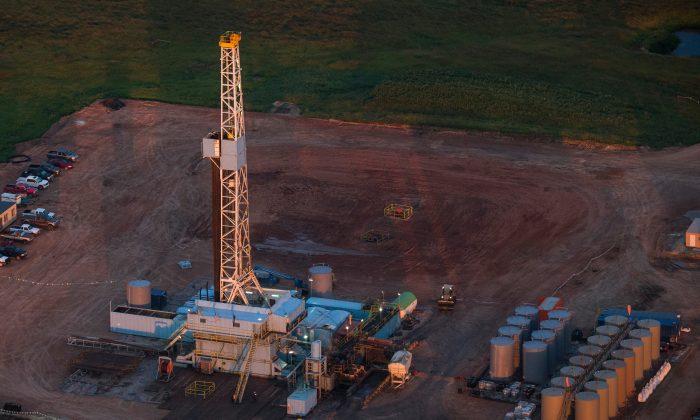News Analysis
The U.S. Energy Information Agency
reported America achieved new energy production records in 2018 with oil up 17 percent and gas up 12 percent, as China demand soared.
The U.S. energy production was evenly balanced in 2018 with petroleum liquids accounting for 28.7 quadrillion British Thermal Units (Btu) and U.S. dry natural gas production averaging 28.5 billion cubic feet per day. Liquids’ production both hit records with 11 million barrels of oil per day (b/d) and 5 million b/d of condensate gas.
The United States surpassed Saudi Arabia in 2018 as the world’s largest petroleum producer for the first time since 1973, and extended its decade-long lead over Russia as the world’s largest natural gas producer.
Global energy demand grew by +2.9 percent last year with China consumption accounting for 34 percent of growth, followed by +20 percent from the United States and +15 percent from India. China surpassed the United States as the world’s largest crude oil importer with 8.4 million b/d in 2017. Imports currently exceed 10 million b/d and are still rising.
China’s domestic oil production peaked at 4.4 million b/d in June 2015, but over-working in its main drilling fields is blamed for production falling to
3.8 million b/d in 2018. Beijing raised its oil exploration budget by 20 percent to a record
$77 billion in 2019. China claims that production over the next 5 years will increase by 50 percent, or 2 million b/d.
U.S. crude oil production
doubled between 2010 and 2018, with almost three quarters of the growth coming from the Permian Basin in western Texas and southeastern New Mexico. U.S. production was down from 12 million b/d in June to 11.7 million b/d in July due to drilling platform hurricane evacuations in the Gulf of Mexico.
The Energy Information Agency (EIA)
forecasts record crude oil production averaging 12.3 million b/d in 2019 and 13.3 million b/d in 2020. The United States is set to produce more petroleum oil and liquids than Russia and Saudi Arabia
combined by 2025.
U.S. oil production from completed wells would have been one to two million b/d higher, but production substantially outpaced pipeline construction. With EIA forecasting a
large pipeline expansion including 9 intrastate oil pipeline projects coming online between 2019 to 2021, there is high probability U.S. oil production forecasts will be raised.
With coal as China’s primary fuel to produce steel and cement, pollution health-risks have forced the country to become the largest importer of liquid natural gas (LNG), with demand growing at over a 16 percent per year.
Although China is currently retaliating in the trade war against the United States by banning LNG imports, the U.S. competitive price advantage is expected to force China to become America’s top customer for LNG exports.
Chriss Street is an expert in macroeconomics, technology, and national security. He has served as CEO of several companies and is an active writer with more than 1,500 publications. He also regularly provides strategy lectures to graduate students at top Southern California universities.





